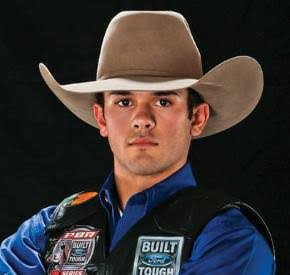“The Ride That Matters Most”
A Story of Kaique Pacheco’s Mission Beyond the Arena
The eight seconds that made Kaique Pacheco famous were always about control, balance, and heart. But when the Brazilian-born bull rider bought a weathered, abandoned house on the outskirts of Nashville and poured \$3.6 million into its transformation, it wasn’t about the ride anymore.
It was about stopping the fall.
—
It started after a long night on the PBR circuit. Kaique had just placed second in the national standings. His legs ached, his back throbbed, but it wasn’t the physical pain that kept him up in his hotel room. It was the image of a young boy he’d passed on the sidewalk outside Bridgestone Arena—no older than twelve, barefoot in the cold, trying to sleep behind a soda machine.
He didn’t have a name. He didn’t ask for anything. But he looked up at Kaique with an expression the champion knew too well: hopelessness.
That night, Kaique couldn’t sleep. The hotel comfort meant nothing while a child tried to survive outside on concrete. The next morning, he asked his manager to delay their flight. Then he asked a question he hadn’t said aloud before:
“Is there a way I can help… all of them?”
—
Kaique had come a long way from Itatiba, São Paulo, where bulls were a way of life and riding was the dream of every daring boy. But the pain of being young and powerless never left him. He’d lost friends to poverty, watched neighbors disappear into addiction, and even spent nights sleeping in barns before his rise.
That boy in Nashville brought it all back.
He started with research. Tennessee’s youth homelessness numbers had spiked over the past five years. Shelters were overwhelmed. Teens were aging out of foster care with nowhere to go. Kids as young as ten were on the streets, especially in urban corridors like Murfreesboro, Clarksville, and parts of East Nashville.
Kaique didn’t want to donate. He wanted to *build.*
—
The house was a Victorian-era shell, tucked between two boarded-up homes in East Nashville. Locals called it “The Skeleton House.” It had broken windows, crumbling walls, and a yard choked by weeds—but Kaique saw it as something else.
“I see a future here,” he told the skeptical contractor.
And so began the transformation.
He hired local workers, many of whom had experienced homelessness themselves. He brought in designers from São Paulo and Nashville to collaborate on a space that felt like *home*, not a facility.
The kitchen had warm wood tones and a massive communal table. The bedrooms had soft, earthy colors and thick blankets. The backyard was turned into a small horse therapy corral—because for some of these kids, touching an animal for the first time could mean touching hope.
He named it **Casa Esperança**—House of Hope.
—
The grand opening was quiet. Kaique didn’t want a media circus. Just the first twelve youths who would live there, aged 13 to 19, walking in for the first time with caseworkers and volunteers at their sides.
One girl stood frozen at the door.
“You’re safe here,” he told her gently, offering no pressure, only an open hand.
She eventually stepped inside—and burst into tears.
That moment reminded him of his first night in a real bed at a rodeo sponsor’s ranch when he was sixteen. No sirens. No fear. Just a pillow, and silence.
—
Word spread fast. Kaique hadn’t intended it, but PBR riders, country musicians, and Nashville philanthropists started reaching out, asking how to help. He didn’t need money. But he did need mentors.
“I don’t just want to give them shelter,” he said. “I want to give them a shot at life. At pride. At standing tall.”
Soon, the shelter had workshops in music, welding, equine therapy, and cooking. A local college offered GED prep classes. A bull rider turned philanthropist had lit a fire in the city.
But Kaique was there every week. Sometimes mucking out stalls, sometimes sitting beside kids as they opened up about what they’d survived. Abuse. Hunger. Abandonment.
He didn’t flinch. He’d heard it all before, lived pieces of it.
“Pain makes you strong,” he told one young man. “But healing—that makes you powerful.”
—
One day, Kaique was in the back garden, teaching two boys how to build a proper fence post when a familiar voice came from behind:
“You know you could’ve just written a check and gone home, right?”
It was Jess Lockwood, his longtime PBR friend.
Kaique smiled. “That’s not how we ride, brother.”
Jess looked around and nodded. “This place is real. You did good.”
Kaique didn’t answer. He just looked out at the garden, where a new swing had been built, and a girl was laughing for the first time in weeks.
—
Months passed. Casa Esperança became a model. Other athletes reached out—NASCAR drivers, country singers, UFC fighters. Pacheco had quietly begun something bigger than himself. Not a trend. A movement.
But he never let it become about him.
When interviewed by a local paper, he said only: “They deserve more than survival. They deserve to *live.*”
—
That winter, the boy who started it all returned.
Not by design. He came in with a youth worker. His name was Marcus. He was fourteen now, gaunt but taller, eyes still weary. He looked at Kaique like he wasn’t sure if it was all real.
“You remember me?” he asked.
“I never forgot you,” Kaique said, placing a hand on the boy’s shoulder.
Marcus moved in that week.
And on the sixth night, as snow drifted outside, Kaique walked through the halls of the house he rebuilt—not with money, but with memory, and purpose.
He paused outside Marcus’s room. Through the door, he could hear music playing. Laughter. Life.
This, Kaique thought, is the only ride that matters.
